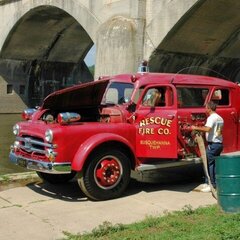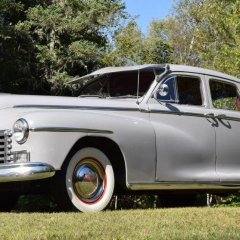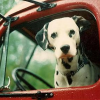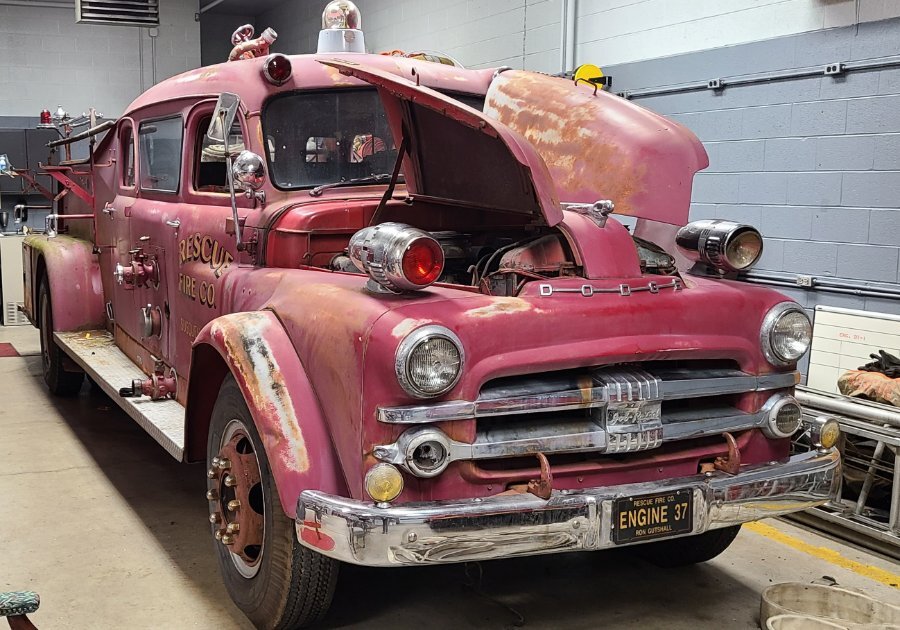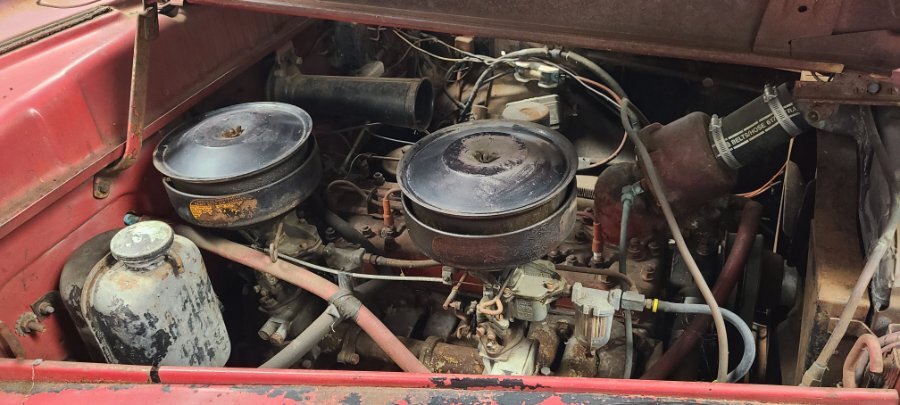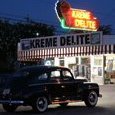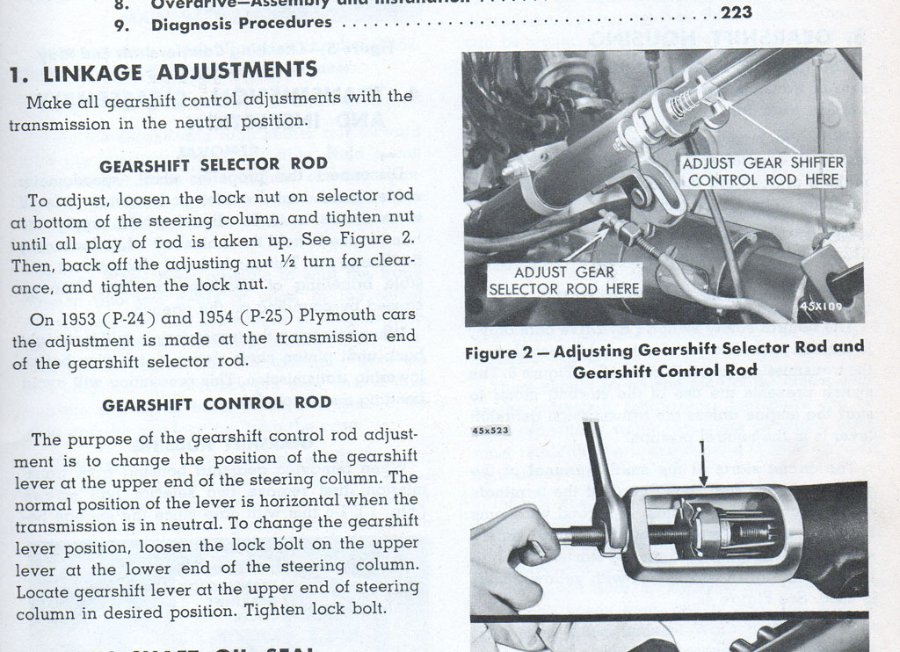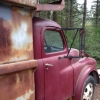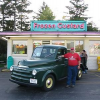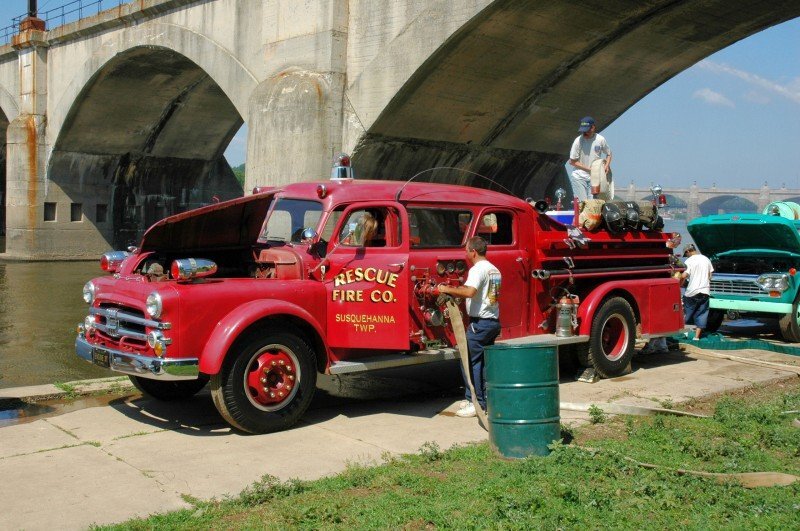Leaderboard
Popular Content
Showing content with the highest reputation on 08/16/2023 in all areas
-
Morning y'all. So our volunteer fire company is looking to restore our old 1953 Dodge Bruco Fire Engine. Vehicle plate says B-4TA-190, 152HP at 2900rpms, 171HP at 3200rpms. The engine block is stamped with T324-3337, the plate that should be on the manifold side is missing. My research of the engine stamp points me that it's a 377ci engine, correct? Tho I thought these came originally with a 331ci or 413ci. My only real question currently is what direction do I search for parts? Most sites focus on the smaller engine blocks. We haven't fired this engine up yet, still cleaning and inspecting everything. What engine parts were universal across the small to large block flatheads? I have attempted to use the search function but it doesn't seem to wanna pull up 377 by itself. I'll have to do some deep browsing thru the forum when I get a chance. Thank you.1 point
-
1 point
-
1 point
-
" in gear where second should be...? What does that mean? Dodge was slow to get the semi-automatic transmission. It had Fluid Drive with the 3-peed manual, as described above. Eventully, Dodge got the semi-automatic. Easy way to tell - Standard Transmittion, H pattern. Pull and up for Reverse, pull and down for 1st, push and up for 2nd, push and down for 3rd. Semi-Automatic - pull and up for Reverse . NO Pull-and-Down - No "1st". Push and up for "Power" (automatoic shift !st to 2nd - stump puller.) Push down for "Drive" (Automatic shift 3rd to 4th.)1 point
-
Planting crops that not only reduce CO2 but lock nitrogen into the soil, provide soil cover to prevent evaporative losses and hold moisture in the soil, provide for bees and other pollinators, those are real methods to combat CO2, not legislating us into the Middle Ages1 point
-
Ditto Doug&Deb's post. What it looks like you are expecting to happen is not supposed to happen with your car's fluid drive, it is not an automatic transmission. It's up to the operator how to drive the car, you can either go through all the gears like normal, or once in second or third, just leave it there the rest of your trip, depending on where you're driving. I find that city driving where you rarely get over 25-30 that leaving it in second is a little livelier, to avoid getting honked at too much. Use the clutch to get into the gear you want, then you don't have to use it again. Sounds wrong if you're not familiar with it, and the carb has to be the right one for it to work right. What would help with expectations for how the car operates would be an owner's manual in this case, or look up some of the old advertisements for the model.1 point
-
Your car has a 3 speed transmission with the fluid coupling. It doesn’t self shift. It can be driven like a normal manual transmission or simply shift into high gear and drive like that without using the clutch. Of course acceleration is very slow that way lol.1 point
-
Most of the Dodge/Chrysler flathead engines had aluminum pistons. I've never heard anyone on these forums, or other forums, talk about anything but aluminum pistons. Also, I have four factory or Army manuals, and they seem to indicate that nearly all of the engines came with aluminum pistons. The only place I have seen an exception to that is in the Chrysler Six Cylinder Industrial Engine manual, from the early or mid-50's, which lists the industrial versions of the 218, 237 and 251 as having cast iron pistons, but oddly, it lists the industrial version of the 230 as having aluminum pistons. My other manuals all state that the pistons are aluminum. These include: -1942 manual TM 9-808 covering repairs of the 3/4-ton Dodge WC trucks used in WWII, which were equipped with the 230. -1948/49 Dodge Truck Shop Manual (civilian vehicle manual), covering all sizes of trucks, which were fitted with the 218, 230, 237, 251, 282 and 331 cid engines. -1952 Army 3/4-ton truck manual, TM 9-1840A/TO 19-75B-15, covering the M37 and M43 trucks, which were fitted with the 230 engine. I've never heard of cast iron pistons in any truck or car equipped with these engines. The only place is in those industrial engines, but not in any road vehicle or off-road vehicle.1 point
-
I would rather have the two options - lose electricity (more likely), have gas back up. Lose gas - can plug in a heater. I have personally seen the aftermath of large gas line explosions and our wildfires started by electricity. The gas could have been mitigated by proper maintenance, and the electrical could (for the most part) have been mitigated by maintenance, controlled burns, and politicians not mettling in areas they have little knowledge! As for too much CO2 - we can easily plant more trees, and we should!1 point
-
1 point
-
As my grandma used to say..."sweat the meanness out" as she sent me and my brother out to do chores on the farm.1 point
-
Not sad at all that you know what that means. I love running into folks familiar with it. Yes the 52 is a 3 ton. I'm new to alot of things on this rig, so I am definitely still learning. I have 2 other fire engines but this Dodge is the newest of them and the one I am least familiar with. The other 2 are a 1948 Ford and a 1950 Chevy.1 point
-
1 point
-
Ok, last video of my 6v positive ground system being ran off 12v battery https://youtu.be/kCR6qPUjyYQ hopefully this one is more clear and you can see it only takes one wire from the coil to the battery….. nothing else hooked up. Keep in mind though, don’t just leave the coil wire hooked up to the battery without it running. (Or at least trying to start it) The coil will get hot. Example = don’t hook it up and the go make yourself a sandwich ?1 point
-
I have run many cars and trucks including these big truck twin carb engines by gravity fuel feed. This using a gallon can with nipple and hose feeding into the front carb connection. Fuel can setting high up on cowl.Fender is not high enough...not enough flow. Because you cannot yet get complete go ahead yet this will at least get a thrill going seeing it run and make some noise and smoke....and show the audience you are the man for the job! I like to get the engine running...hear it, listen to it...check oil pressure cold and hot ....watch temp/amp gauges...test the clutch and shift the trans lever..all routine stuff to do. Then maybe...a very short test drive to see how the vehicle might/ can drive. This with out brakes...done it many times..first making sure the E- brake works good enough to stop the car/truck.. As for rebuilding the brakes..You can try honing all the cylinders...hopefully not too pitted...but that's a very heavy rig to be driving with marginal brakes..the hardest part of the brakes on that fire truck might/will be the booster. But worry about that all later. Fire it up...get a thrill hearing it run again! Do that first...the easy exciting part. The rest of the work might not be as easy and fun.? Video it for us when you do fire it up...please!?1 point
-
It was still looking good in the '90's. I'm guessing at some point in time it was left parked outside and no longer used. That's a shame. Glad to see it getting some love again. It's interesting that all of the valving and hose connections are between the front and rear cab doors. Is the pump driven from the PTO and placed in that space too? I wonder if this serial number identifier/decoder will show which engine this truck would have? Just type your chassis serial number in and see what it shows. https://www.t137.com/registry/help/decode.php1 point
-
Ok... Door Vin Plate "B-4-TA 190"... B= B series Truck 4= year (1953) T= 3 Ton Rating A= 2 Speed Rear Axle (Timkin Double Reduction) 190= 190" WB As for the "T" series trucks they originally came with the 331ci T322 engine.....3-3/4" bore X 5" stroke. Your fire engine truck has a T324-3337 engine. That T324...engine is a designated 4 ton truck engine that first came out in 1951 and was used through 1953. The T324...engine was used in the biggest of the Dodge truck line "Y" series trucks. But now...Gets a little sticky. That T324..engine from 1951 thru 1952 is a 377ci. 4" bore X 5" stroke. The T324.. engine starting in 1953 had a bore and stroke increase to make it a 413ci. 4-1/16" bore X 5-5/16" stroke. The only easy way to see which T324.. engine is in the fire engine (377 or 413) And how to do that is to remove the 7/16" hex plug over #6 cylinder and measure the piston stroke using a straight piece of say 1/8" steel rod. Remove the hex plug...set 10"-12" rod down hole to piston top. Remove all spark plugs so the engine will turn over easily by turning the fan (fan belts need to be tight) or use thumb to keep belt tension while turning fan. Measure the total up/down rod travel while rotating the engine using the fan. 5" is a 377ci. 5-5/16" is a 413ci. That engine will run just fine... The Moly Block engines are serious heavy duty engines. Change the oil and filter. Clean and rebuild the Ball and Ball carbs....easy to get the carb kits... Could be E7U1 or 2 E9G1.. NAPA/O'Reilly's even has the kits..I just bought two kits for a 413 I did carbs on. Points, condensor.... All I will say don't buy new from a parts store...Chinese junk. I would just to get it up and running carefully clean the existing points..set to .020" check the cap and rotor...it will fire right up. Fuel pump and tank will be a problem...get the pump rebuilt with a ethanol resistant diaphram etc. Gad tank....well look at it clean it...do what it needs to be real clean and rust free. There is plenty more to get caught up on needed maintenance....let others offer up on that. Looks like that truck has hydraulics with the double bladder brake booster...didn't see a air compressor. That's another story there! Good to see the engine given new life!1 point
-
1 point
-
Thank you Lingle. I've been browsing around the pilothouse website for a week now haha. Still slightly limited on the bigger trucks. I understand the mechanics are very similar. So it's moreso confirming the engine size, and probably finding proper replacement ignition system. I'm currently bench working the starter and Generator. The rest of the motor looks pretty solid. She isn't seized. Once the starter is good we will compression test it.1 point
-
awesome project! there are some people on the forum that have larger trucks but do not know they are that size. there is another website that is tied to this one and they do have some good info, including the service manual for the B4: https://dodgepilothouseclub.org/know/B4_manual/manual.htm there is also a sticky with several vendors that may be handy as well. Good luck and welcome to the forum!1 point

